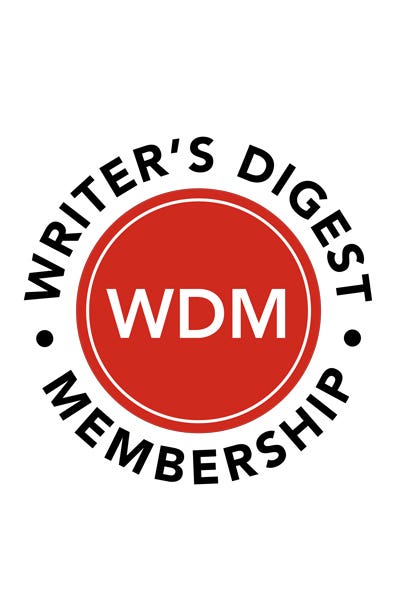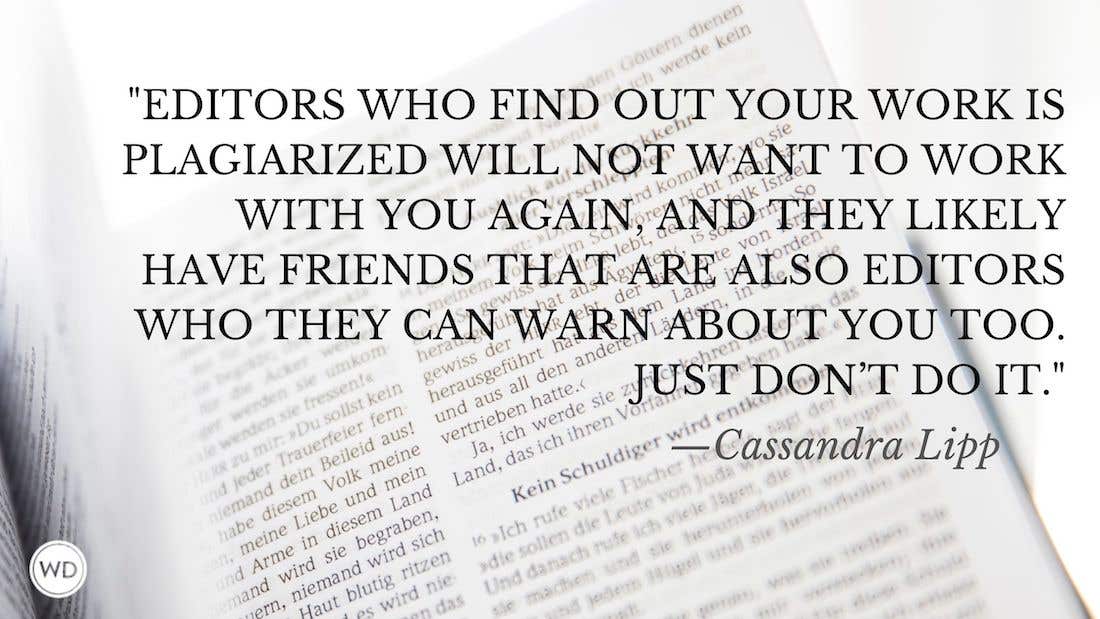Falling Into Place
Arrange your poetry with a purpose to shape your collection into a cohesive, lyrical manuscript.
Some of the best advice I ever received on how to sell a poetry collection came from an unlikely place—an editor who passed on my manuscript. His instruction: Take your time and think about why these poems belong together. Do what it takes to make the compilation as good as it can be.
Interpreting this advice as an invitation to resend my work after a thorough edit, I got back to work. Cuts were made, poems were added and the entire collection was purposefully reordered with a more cohesive flow. I sent the work back to him, and he responded with a publication offer.
I considered (and still consider) myself very lucky. We all know editors and contest judges read hundreds—even thousands—of poetry manuscripts every year and publish so few. What makes the chosen ones stand out? To find the answer, I interviewed accomplished poets, as well as poetry editors, and found 10 tips on forming an interconnected manuscript that's sure to help you connect with readers and get serious consideration from publishers.
1. Collect your best and most cohesive poems. April Ossmann, executive director of Alice James Books, advises asking yourself this question before you think you have a finished manuscript: Does your collection consist of all the poems you've written in the past few years or your best, most thematically interconnected poems over the past few years? She recommends striving for the latter.
Editors agree that cohesiveness is paramount, provided that the work is strong. Larry Smith, director of Bottom Dog Press and author of Milldust and Roses, says he looks for the vision behind the work—its witness, intention and centeredness.
Michael Simms, executive director of Autumn House Press, notes that coherence is unique to each collection. It may require a distinctive voice, consistent argument or repeated form to hold the poems together. "Just as there's no single quality that makes for a successful poem, there's no single strategy that makes a successful collection of poems," he says.
On the other hand, there are several ways to send your collection down the road to failure. Jim Daniels, creative writing program director at Carnegie Mellon University and author of 14 books of poetry, says he's judged and rejected many collections too tightly clustered around a concept that seems gimmicky rather than heartfelt. "Unless I feel like the author is personally invested, those manuscripts are going to fall by the wayside pretty quickly," he says.
Poet Tina Chang, author of Half-Lit Houses, gave herself room to make initial discoveries before thinking too much about concept: "I allowed myself to have fun, to be influenced, to fall in love, to live my life—and the poems naturally shaped themselves. There was no need to 'farm my heart,' as the poet Jack Gilbert once said. The substance, of course, was there. It seemed to spring from ideas that had been gestating all my life."
2. Begin with a poem that invites the reader to continue reading. "From the first poem on, I want to know the story the writer is trying to tell," says Maria Mazziotti Gillan, author of eight poetry books, including Italian Women in Black Dresses. "Do I believe the poet's voice is honest? Do these poems make me cry or laugh, or make the hair on my arms stand up?"
Think of your first poem's ideal impact as a bomb exploding on the page. According to Thom Ward, author of three poetry compilations and editor of BOA Editions, a manuscript has to "obliterate" the reality around him. Ward says that many readers start out indifferent, which is why the open-ing must make an impact. "Perhaps the poem's cadence or voice draws their attention. They're curious," he says. "They gain interest. They feel for the characters. They sense the urgency of the conflict and anticipate what's coming. They want to continue reading."
Despite all the reasons to quickly dismiss a manuscript, editors will read on if they become invested in your poems. "We hope to give readers something they value...not just as art but as something that moves and helps their life," Smith says.
3. Consider linking devices, such as character, theme, setting and imagery. Every poet has obsessions. For me, it was the river town where my family found blue-collar work after emigrating from Italy, and the tension between people who left the dying area for new opportunities vs. those who had no choice but to stay. I relied on river imagery throughout my work to hold the manuscript together. According to Chang, this kind of repetition can be an asset: "Certain images, words and linguistic strategies may appear over and over, and that's not to the collection's detriment. In fact, to recognize these forms of repetition is to strengthen the poet's knowledge of his own personal lexicon, technical devices and legend."
But use restraint. Kyle Dargan, author of The Listening, which won the 2003 Cave Canem Prize, says, "Poetry is a medium of unsaids, so at some point, you'll have to be comfortable with what the book's focus is, and keep writing and axing poems to get to that point."
When you're ready to sequence your poems, it's a good idea to study published collections and get a feel for ordering techniques. For instance, Ossmann points to Jon Woodward's thematic order in Mister Goodbye Easter Island. "A central question the speaker considers is how we can live with the knowledge that we must die. Each section explores possible solutions: fantasy/escape, heroes/pop culture, religion, science, love/desire, etc." Ossmann says.
Daniels explains how he organized his book Punching Out by using recurring characters and a distinct timeline. It starts with a factory worker's first day on the job and follows him through numerous rites of passage, ending with disillusionment. "For me, it's often about character as much as narrative," he says.
4. Use form for unity. Although writing sonnets or prose poems creates visual unity, writers should consider other ways to find cohesion at the same time. Explains Ossmann: "Using the last line of the previous poem to begin the next poem is one possibility. Subtle links can work equally well. Perhaps you have the word 'ladder' in one poem and the word 'climbing' in the next, or perhaps one poem deals with maternal love and the next with romantic love."
With thematic content, writers needn't go overboard with form. Michael Palma, poetry editor of Italian Americana and author of A Fortune in Gold, says that formal repetition is a "besetting sin" of many poetry collections. "I've always tried instead to maintain formal variety in putting a book together, if only to keep the reader awake," he says.
Dargan agrees: "If you're going to commit to a form for the majority of a book, be willing to subvert or expand the intent behind the form rather than expecting it to carry the text."
Striking a balance, though difficult, can be done. According to Daniels, one example of a collection that overcomes repetition is Joel Brouwer's Centuries. "The little box of 100 words in each poem looks different every time. The danger is that the structure dictates the moves the poems are going to make over and over," Daniels says.
5. Order your poems for impact. "See the book as working together like a long poem presenting a cohesive vision. Not restrictive or imposed, but solid," suggests Smith. "Like when we meet a new person...we get the sense of them through their talk and movements. Your book of poems is a person, a living thing."
Gillan, who's edited anthologies such as Unsettling America, says that organizing thematically helped her see how poems can work off one another, like building a bridge. "The ideal arrangement is to have the poems speak to one another, as well as to the reader," she says.
There are a number of ways to order poems for a bridge effect. Ossmann highlights a few:
• through a narrative line or arc, be it chronological or not
• through theme, by grouping, interweaving or evolving
• through linkin g, by repeating an image, word, phrase or subject
• through variation, by using comic or other relief
• by varying style, pace, mood or emotion
• by building to a climax.
When reconsidering the order of my collection, I thought of my poems as dominoes that, if sequenced correctly, would spill over to create a movement with a beginning, middle and end. I also placed narrative poems between abstract ones—not just for a change of pace but also to offer a more concrete context to ponder.
Don't automatically beware a collection that's strayed a bit off course. An occasional "wrong turn" just might take you in the right direction. "A poetry manuscript can tell a story by going off on a tangent, by expanding its territory and not just relating to a particular moment," Ward says. "It can open up and go somewhere else—collect nuances and other terrors. You're not just transcribing the literal. If you like, let some funky piece of graffiti enter your work."
6. Break the collection into sections. A blank page between sections can act as direction to the reader—notifying her when to pause and clear her thoughts before moving on. When I discovered there were two contrasting voices in my poems, I broke the collection into two sections: one with poems from the perspective of those who left the river town, and the other from those who stayed.
Then there's the stacking method. Daniels spreads his poems out on a table into somewhat even piles before deciding how to order them. "Sometimes the poems have a kind of loose chronology or arc," he says. "For example, in M-80 and Blessing the House, I went from poems dealing with childhood to poems dealing with more adult issues—becoming a parent myself, etc."
The trick lies in knowing when your readers will benefit by stopping and when to ask them to keep going. Dargan offers these words of caution: "Avoid overfracturing the book because a reader can and will question why it's a section."
Another way to think of sections is like chapters in a novel. According to Ossmann: "Perhaps in your first section you establish settings, characters and tensions. In the following sections, you develop the characters and dramatic tension. The final section brings a climax."
Ward offers a musical analogy and says sections can be arranged like a Haydn five-movement symphony. Start with an allegro, up-tempo beginning in a major key followed by the slower adagio movement. Continue the piece with a blend between the fast and the slow. Finally, create the last movement to blend elements of earlier musical progressions to pick up on earlier motifs.
7. Leave the reader satisfied with an effective final poem. "The final impression left with the reader must be a solid one and a summation, however indirect, of the collection's thematic concerns," Palma says. "And I especially like the last poem to end with a kind of ripple effect—one that will tease the mind for a bit after the book is finished, rather than snapping shut like a box lid."
Think about arranging your poems in a cyclical fashion, so the final thought or unanswered question in your last poem leads the reader back to the beginning of the book.
8. Reread your manuscript and make necessary cuts. Gillan showed Italian Women in Black Dresses to two stringent critics and asked them to identify poems that distracted from the collection's unity. She then reread the manuscript with their criticism in mind and pruned weaker writing from the collection.
Daniels has a similar approach, asking friends to name the five best and five worst poems. "If they're all picking the same five worst, those poems are gone; however, sometimes there are a couple of pretty strong poems that are just too similar to each other—in terms of either subject matter or structure," he says.
Dargan says that shaping a poetry manuscript is like building the lightest possible plane that will fly. "Many collections have poems that may not be the best yet are necessary because they provide a change of pace—a palatal reset to set up other poems," he says.
9. Choose a title that binds the collection. "It's like naming a rock band—it might sound good for a while, but you've got to live with it for the rest of your life," Daniels says.
While researching ways to revive economically depressed towns across the country, I spotted the phrase "death by renaissance." I liked the irony in those words and thought it captured my take on how to revive dying towns without losing the community spirit on which they were founded.
Ossmann says different titles work in different ways—from choosing an accessible one that explains your project, such as Twenty-one Ways of Looking at Religion, to intentionally misleading or surprising the reader. "As a publisher, I always want a title that's attention-grabbing in some way, as well as being appropriate to the collection."
10. Use introductions, epigraphs and notes judiciously. Introductory "proems" or representative poems serving as introductions can help frame a collection, but make sure they're up for the task. "I can't tell you how many manuscripts I read with really weak proems. That's not the way you want to introduce an editor, or any reader, to your collection," Ossmann says.
Another word of caution for using epigraphs: They, too, are hit-and-miss. As Daniels notes: "Sometimes they're great—they trigger the poem. Other times they seemed tacked on. I can get annoyed and distracted by them after a while. They can seem pretentious or, in worst cases, better than the poem itself."
You may not think so at the time, but writing on a wave of inspiration is the easy part. Revising with a drip of perspiration on your brow is the true test for writers facing the odds of a tough market such as poetry. Take your time with a manuscript and make sure it's the best product possible before submitting it to agents and editors. Do this and you'll be many steps ahead of the competition.









